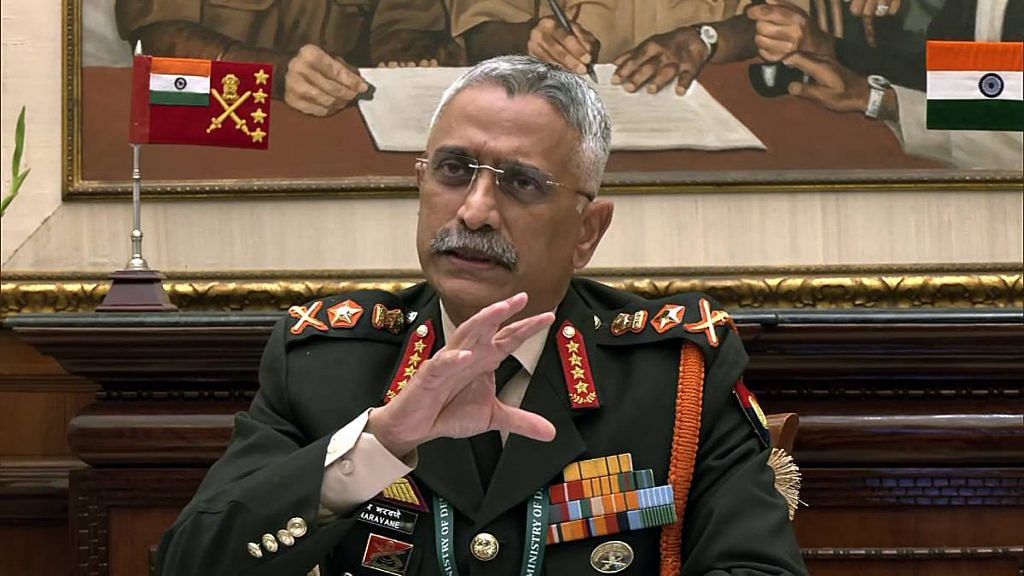The Chief of Army Staff’s annual conference on 12 January was mainly focused on the ongoing military standoff between India and China in Eastern Ladakh. However, it was General MM Naravane’s statement on Siachen that attracted a lot of media attention. In response to a question, General Naravane stated: “We are not averse to demilitarisation of the Siachen glacier, but a precondition to that is to accept the AGPL [Actual Ground Position Line]. Pakistan has to accept what are their positions and what are our positions, and both of us have to sign on the dotted line before any kind of disengagement takes place.”
The AGPL currently lies along the Saltoro range that rises west of the Siachen Glacier, with the India Army holding most of the heights in a tactically advantageous position. There have been 13 rounds of talks on the demilitarisation of Siachen, the last one at Rawalpindi in June 2012. After almost a ten-year hiatus, are we to read more into General Naravane’s statement beyond a normal factual response to a question? Is the current environment conducive to a move forward on the Siachen issue?
Also Read: Kumar’s line vs Hodgson’s line: The ‘Lakshman rekha’ that started an India-Pakistan fight
Views on importance of Siachen
There are sharply divergent views on the strategic importance of the Siachen area. One side points to the futility of maintaining soldiers in terrain that precludes the launch of large-scale operations. Lt General V R Raghavan, who served as the Director-General of Military Operations, wrote in his book Siachen: Conflict without End: “It is apparent that neither India nor Pakistan secures a strategic advantage by contesting the possession of the Saltoro range. Neither also faces a military threat to the territory it occupies in Jammu and Kashmir from over the Saltoro range…A strategic veneer is given to what is actually a political necessity for continuing the conflict.”
Others disagree, pointing out that this area is bound by Pakistan to the west, the Chinese Shaksgam valley to the North, and the Sub Sector North (SSN) of Ladakh to the east, where the People’s Liberation Army (PLA) is confronting the Indian Army in the Depsang plains. If military collusion between Pakistan and China is to occur, this is the area where it is most likely to happen. Without going into the merits of the arguments on both sides, in my view, the main issue is not the strategic value of Siachen but that of territory.
Territorial sovereignty far outweighs strategic importance. That is why India has been insisting on the marking of the current positions that the Army holds on maps that are to be ratified by both sides. This will establish Indian territorial control along the Saltoro range. On the other hand, Pakistan has been reluctant to authenticate Indian positions as it will legitimise India’s ‘illegal act’ of violating the Simla Agreement by occupying an area that was under Pakistan’s administrative control. The crux of the matter is that neither side is willing to make any territorial compromise.
Also Read: Surviving on milk powder and willpower, six Indian soldiers held a peak on Siachen for half a year
Political climate of India and Pakistan
Any resolution on Siachen also cannot be divorced from the political climate in both countries and the security environment. It would be instructive to look at the three times India and Pakistan came close to arriving at an agreement on Siachen. The first instance came in the fifth round of talks held in June 1989. The joint statement issued after the talks stated: “There was agreement by both sides to work towards a comprehensive settlement, based on redeployment of forces to reduce the chance of conflict.” This was a direct result of Rajiv Gandhi and Benazir Bhutto’s political intervention in attempting to find a solution on Siachen.
The sixth round in 1992 carried forward the discussions of 1989, and this was the second time that an agreement was almost reached. However, there was no political acceptance by then-Prime Minister Narsimha Rao to ratify the agreement. In 2006, a draft agreement was drawn up for a phased, mutual withdrawal and joint monitoring of a demilitarised zone at Siachen. Although this agreement also could not be finalised, it is worth noting that it came at a time when the political leaders of both countries were seriously engaged in the composite dialogue covering all aspects of India-Pakistan relations.
With bilateral relations at a low, the current political climate gives little reason to believe that any serious discussion on Siachen could take place. Alongside this, there is the ongoing standoff with China in Eastern Ladakh. The Siachen area and Depsang plains are only separated by the barrier of the Karakoram range. While this might appear to be a formidable obstacle to any link between the China and Pakistan frontiers, geography rarely deters a determined military. The Siachen conflict is but one example of this fact.
We could give many good reasons for the demilitarisation of Siachen — the deadly toll on the soldiers, the cost of maintaining forces at these heights, the environmental damage, etc. However, the political and security realities do not suggest any grounds for a significant change in the Indian stance.
Lt Gen. D.S. Hooda (retd) is former General Officer Commanding-in-Chief of the Indian Army’s Northern Command and a senior fellow at the Delhi Policy Group. Views are personal.
(Edited by Srinjoy Dey)
